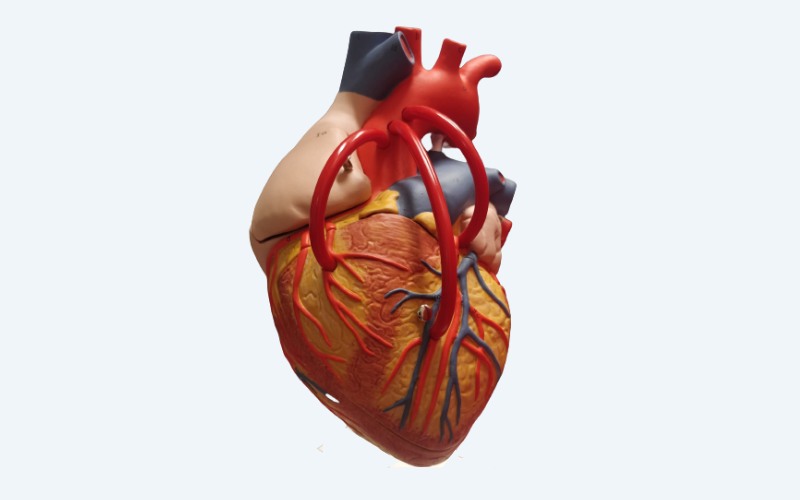
CABG
What is CABG (coronary artery bypass grafting)?
Coronary artery bypass grafting or CABG (loosely called ‘cabbage’ or bypass surgery) is a heart operation to treat problems with blood supply to the heart muscle, a condition called ‘coronary artery disease’.
What happens in coronary artery disease?
The heart muscle requires a continuous supply of ‘pure’ blood to function well. This is carried to the heart muscle by two arteries which give off branches making it effectively three main arteries. These give off further branches in turn to cover all areas of the heart. For various reasons (risk factors), in some people, over a period of time, fatty material builds within the fine arteries and this causes narrowing or obstruction within the arteries. This leads to reduced blood flow and can cause symptoms like chest pain (angina) or breathlessness or dangerous conditions like heart attacks and related complications.
How does CABG work?
The aim of the CABG operation is to restore blood supply to areas of the heart lacking adequate blood supply due to narrowings or obstructions in the coronary arteries. For this, new pathways of blood supply are created so fresh blood can reach downstream, beyond the narrowing or block, and hence the name ‘bypass operation’.
When is CABG a good option?
There are other options for improving the blood supply to heart muscle. Medications can help improve the blood supply but may not be sufficient especially if the disease is severe. Stenting (angioplasty) is another option, where cardiologists place a stent (a frame-like device) to squeeze the fatty material to the sides and improve the opening in the arteries.
CABG is recommended when there is extensive involvement of the heart arteries especially when patients are diabetic as well. In this situation, stents are either not possible or do not address all areas completely and the long-term results of multiple stents are known to be worse compared to CABG.
Ultimately the best option for a patient depends on the angiogram findings and a patient’s characteristics and it is best to discuss with a properly qualified expert doctor who has experience of dealing with this condition.
How is a CABG performed?
The operation is performed usually with a cut through the middle of the sternum (breastbone) to reach the heart. Additional cuts may be required on the legs for taking a vein or a forearm for taking an artery which are all used to provide substitute channels of blood flow. An artery inside the chest wall, the mammary artery is almost always used at a bypass operation. One end of the artery or vein is attached to the coronary artery beyond the obstruction and the other end is connected usually to the aorta (the large artery supplying ‘pure’ blood to the body). The operation may be performed on a still heart with a heart-lung bypass machine supporting the circulation or on a beating heart without the use of a heart-lung bypass machine. The two methods are largely equivalent although there are certain situations when one may be better than the other. However for all practical purposes, there is no difference between the two procedures. Your surgeon will be able to discuss further details with you as required. After the operation is complete, the chest is closed, usually with steel wires to hold the sternum together.
Leave a comment/ Ask a question
Practice Locations
My primary workplace is John Radcliffe Hospital, part of Oxford University Hospitals, Oxford. However I see patients referred from a number of hospitals across a wide area including Northampton General Hospital, Northampton (Northamptonshire); Great Western Hospital, Swindon (Wiltshire); Milton Keynes University Hospital, Milton Keynes (Buckinghamshire); Jersey General Hospital, Jersey; Kettering General Hospital, Kettering (Northamptonshire); Wycombe Hospital, High Wycombe (Buckinghamshire) etc.
About Me